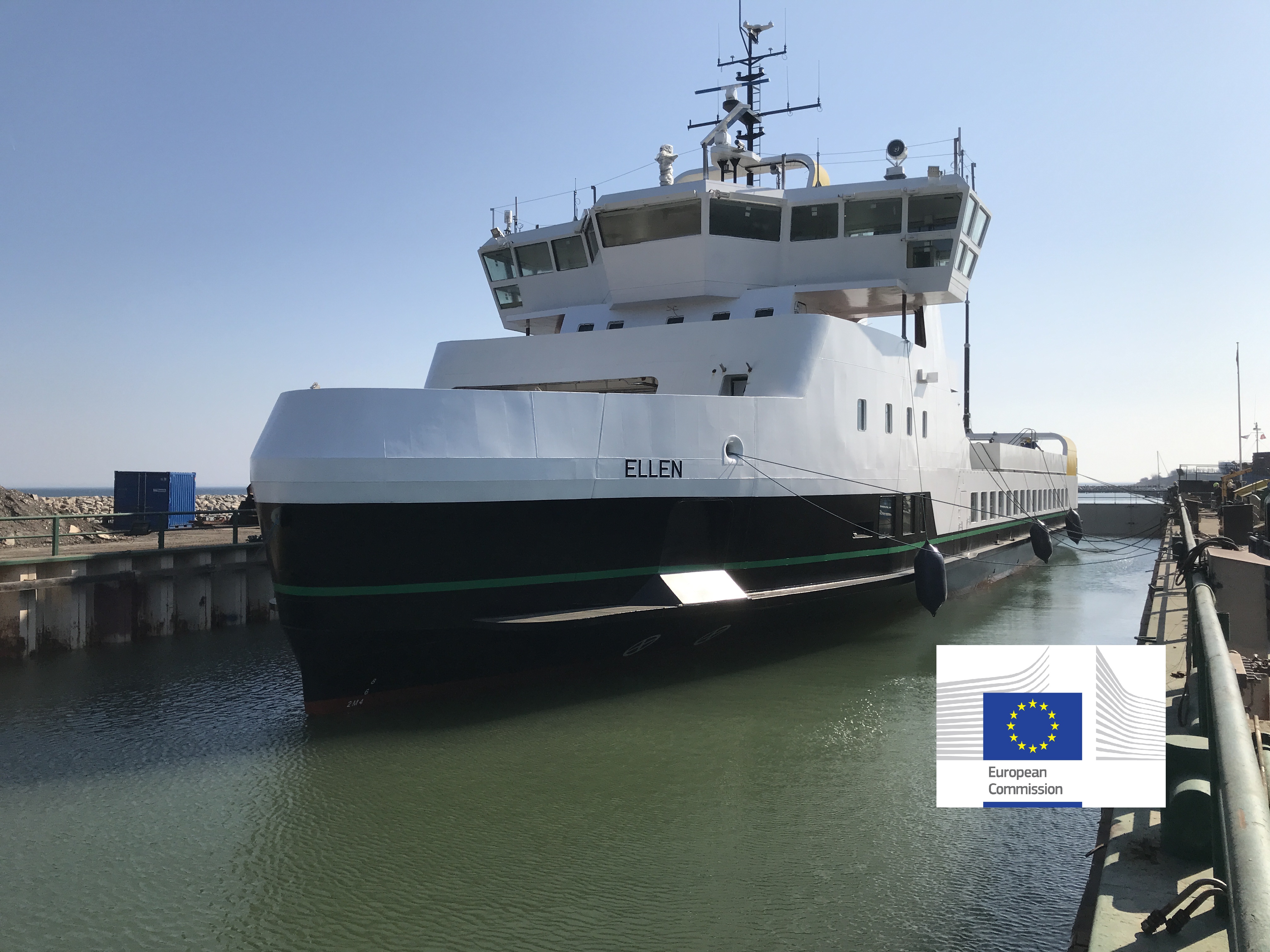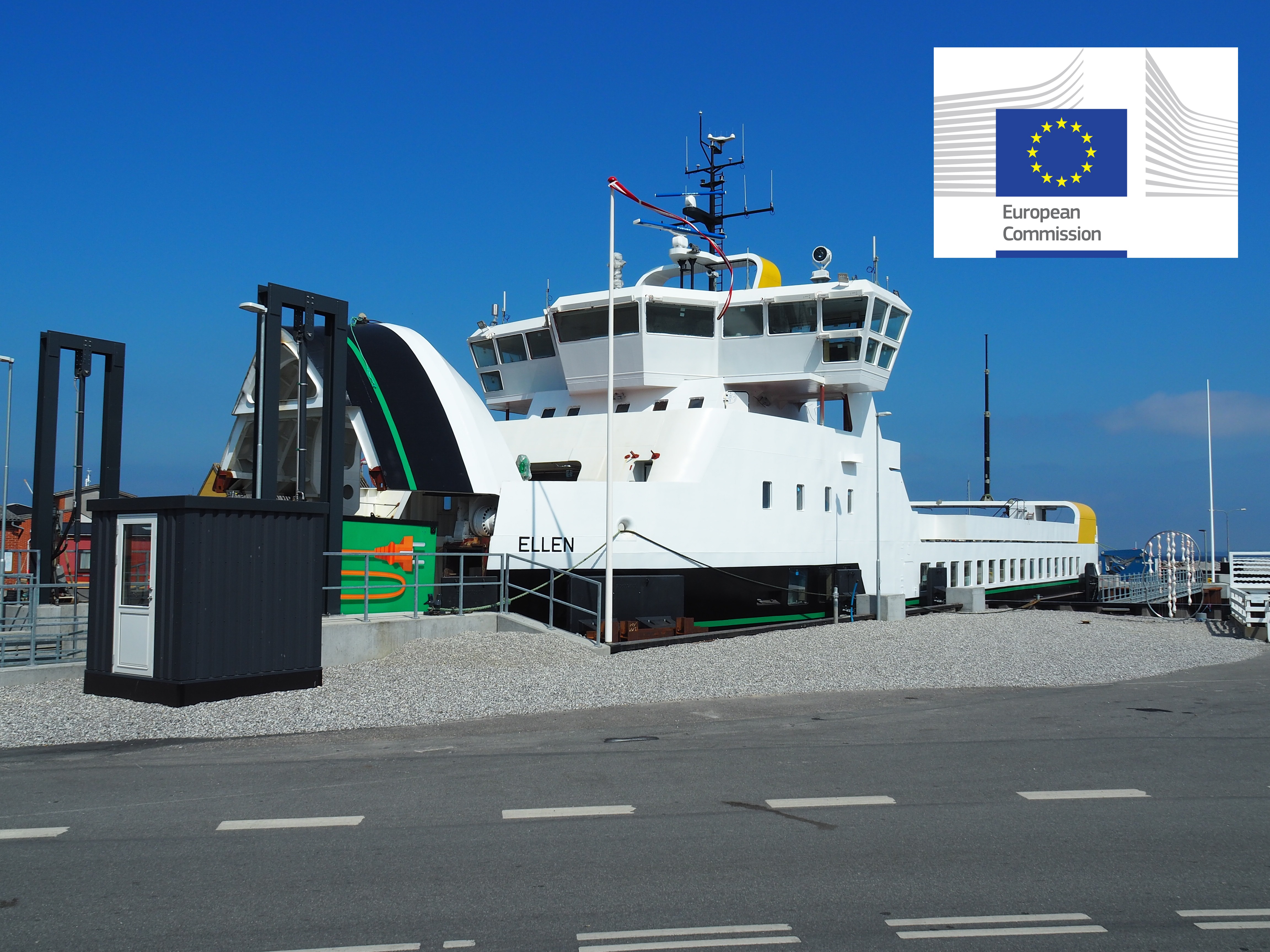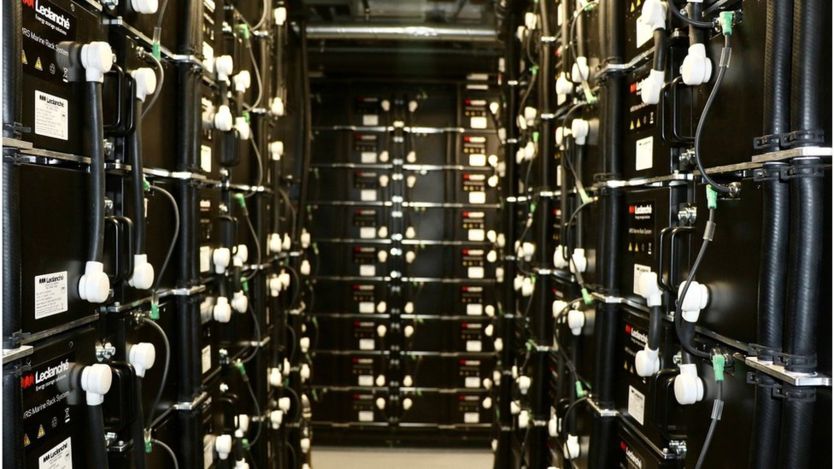
- Sustainable Planet -
- 7mins -
- 644 views
Meet Ellen, the worlds largest e-ferry with over 50x the battery capacity of a Tesla
Ellen’s home is the Danish island of Ærø, where she makes her carbon-neutral voyage to a neighbouring island 5 times a day. The 750-ton all-electric vessel is capable of carrying roughly 30 vehicles and 200 passengers.
Electric ferry will save 2,000 tons of CO2 emissions a year
Ellen, a 750-ton all-electric ferry with the claim of having the longest electric range, has been in operation between the southern Danish port of Fynshav and Søby, on the island of Ærø, for a few months now. The ferry’s battery packs are recharged with surplus wind power from the Danish island, which produces 130% of its needs, meaning that it is always powered by clean energy. It’s estimated the electric vessel will save 2,000 tons of CO2 emissions a year.

Electric ferry designed using lightweight materials, including recycled paper furniture
In 2015 the European Commission (EC) announced a project to build the world’s first fully-electric ferry, able to travel more than 20 nautical miles, thanks to what would be the world’s biggest battery – in a maritime setting at least.
E-Ferry, a four-year, €21.3 million project, is funded by the EC and industry as part of the Horizon 2020 Research and Innovation programme.
“Ellen” as the ferry has been christened, is a fully electric, medium sized car and passenger ferry, run only on power from batteries charged in harbour. It crosses distances of up to 22 nautical miles (38km) between charging.
Able to carry 31 cars or five trucks, and as many as 198 passengers at capacity, Ellen sails between Søby on the island of Ærø, and Fynshav in Denmark, operated by the Municipality of Aeroe (Ærø Kommune).
At almost 60 metres long and 13 metres wide and with a top speed of between 13-15.5 knots, it cuts the travel time of a single trip to 55 minutes, down from the 70 it takes the oil-powered vessel currently operating on the route.
A significant part of the design specification was to use lightweight materials, ensuring the ferry uses as little power as possible. The use of steel was restricted to just the specially-designed hull, with the bridge constructed of aluminium instead. Deck furniture is constructed from recycled paper rather than wood.
Designers also opted to remove the onboard ramps, instead using shoreside ones. The car deck is also positioned on the same level as passenger areas; in total the ferry weighs 750 tonnes.
Source: Ship-Technology.com

Ellen’s revolutionary design efficiencies are a model for the future of shipping
Ellen’s batteries
Ellen has two battery rooms, both below deck in the middle and towards the stern. Each contains 10 battery strings – made up of 42 unique modules – offering a total capacity of 2,150kWh per room. When fully charged the vessel boasts 4.3MWh of power, more than enough to complete its 22 nautical mile round-trip between charges.
Project coordinator Trine Heinemann told Ship-Technology.com that power redundancy, critical in transportation, was a challenge, particularly given the lack of a backup power generator. “The required redundancy was achieved through the designing of the system around individual battery modules. Each module comprises multiple cells connected in series or parallel. These modules are placed in one of the two battery rooms, with each operating independently. With 20 banks in total, should one fail, the other nine will take over.”
As well as having the largest known maritime battery capacity, the ferry is one of the first in the world to have no emergency generator.
In 2015 Leclanché announced it was developing the G/NMC type-approved batteries, based on a system already used for land transport. They were optimised in several ways, including a 20% weight reduction.
Charging the ferry
A further weight saving method was to place the heavy charging equipment onshore. Heinemann explains: “We charge in our home harbour only. The charging arm is placed on the ramp of the harbour so it moves with the tide. We start in the morning with a fully charged ship. After the first trip we top off as much as we can before leaving harbour again. We do the same for the next six trips before mooring for the night and fully charging again.”
Finland’s Mobimar Ltd supplied the unique charging arm and onshore station. With its own power supply, the charging house comprises four transformers, converting the supply to DC before it is pushed to the batteries through cables along the charging arm.
Danfoss Editron supplied Ellen’s full-electric drivetrain, comprising two 750kW propulsion and two 250kW thruster motors controlled by DC/AC inverters. This innovative propulsion system means the ferry reduces noise and waves considerably, adding to its green credentials.
Docking is assisted by 250kW bow thrusters, helping increase manoeuvrability and energy efficiency as they are only used in port.
The environmental case for electric ferries
“In operation [Ellen] will be totally clean, no CO2, no NOx and no particulates because we run entirely on electricity,” Heinemann says. “We plan to buy certified green energy so we don’t pollute somewhere else in the chain.”
It is estimated the ferry will cut emissions by as much as 2,000t of CO2, 41.500kg of NOx and 1.350kg of SO2 annually, compared with fuel-powered counterparts.
Because there is no engine room or hydraulics onboard, and the battery system is fully automated and operational from the bridge, the ferry only requires a crew of three instead of the five ordinarily needed for a vessel of its kind.
Although it will cost approximately 40% more than traditional vessels, fuel costs are anticipated to be 40% less, while reduced crew and less maintenance will help cut costs further long-term. According to research conducted by Siemens in 2016, on average it takes five and a half years for an electric vessel to pay for itself.
“Ellen is an excellent example of the future for electric transport: cleaner, greener and more efficient. It is a great project which demonstrates the potential for electric ferries to end users and the industry itself,” Danfoss CEO Kim Fausing told Ship-Technology.
Source: Ship-Technology.com

Shipping: Pollution and Black Carbon
Over 90% of world trade is carried across the world’s oceans by some 90,000 marine vessels. Like all modes of transportation that use fossil fuels, ships produce carbon dioxide emissions that significantly contribute to global climate change and acidification. Besides carbon dioxide ships also release a handful of other pollutants that contribute to the problem.
The shipping industry is responsible for a significant proportion of the global climate change problem. More than three percent of global carbon dioxide emissions can be attributed to ocean-going ships. This is an amount comparable to major carbon-emitting countries — and the industry continues to grow rapidly.
In fact, if global shipping were a country, it would be the sixth largest producer of greenhouse gas emissions. Only the United States, China, Russia, India and Japan emit more carbon dioxide than the world’s shipping fleet. Nevertheless, carbon dioxide emissions from ocean-going vessels are currently unregulated.
Ships contribute a significant amount of carbon dioxide to the atmosphere. The International Maritime Organization (IMO) calculated that ocean-going vessels released 1.12 billion metric tons of carbon dioxide in 2007. This is equivalent to the annual greenhouse gas emissions from over 205 million cars, or more cars than were registered in the entire United States in 2006 (135 million).
Shipping is responsible for over 3% of global anthropogenic carbon dioxide emissions and is growing. Over the last three decades, the shipping industry has grown by an average of five percent per year. The IMO predicts that without introducing measures to reduce emissions from shipping, carbon dioxide emissions from the industry could rise to 1.48 billion metric tons by the end of 2020, equivalent to putting 65 million new cars on the road.
SHIPPING AND BLACK CARBON
Along with CO2, ships emit various global warming pollutants, including black carbon (BC), nitrogen oxides (NOx) and nitrous oxide (N2O). These pollutants all contribute to global climate change either directly, by acting as agents that trap heat in the atmosphere, or indirectly by aiding in the creation of additional greenhouse gases.
Reducing black carbon from ships could slow warming, buying time for further steps to reduce carbon dioxide emissions. Black carbon, more commonly known as soot, is made up of fine particles created by the incomplete combustion of a carbon fuel source such as oil or coal. Aging engines and poor engine maintenance can also contribute to incomplete combustion.
Black carbon is known to be a potent warmer both in the atmosphere and when deposited on snow and ice. Black carbon contributes to warming in two ways – through direct absorption of heat in the top of the atmosphere and by lowering the Earth’s albedo, or reflectivity. Unlike greenhouse gases, black carbon is a solid and not a gas and it warms by absorbing sunlight, rather than absorbing infrared or terrestrial radiation.
Black carbon warms the atmosphere by absorbing light, which dries the surrounding air by evaporating the water in the air and on other nearby particles. This reduction of water content decreases the reflectivity of the other particles, thereby allowing them to absorb more sunlight and create an even larger warming effect in the atmosphere.
Source: eu.Oceana.org

